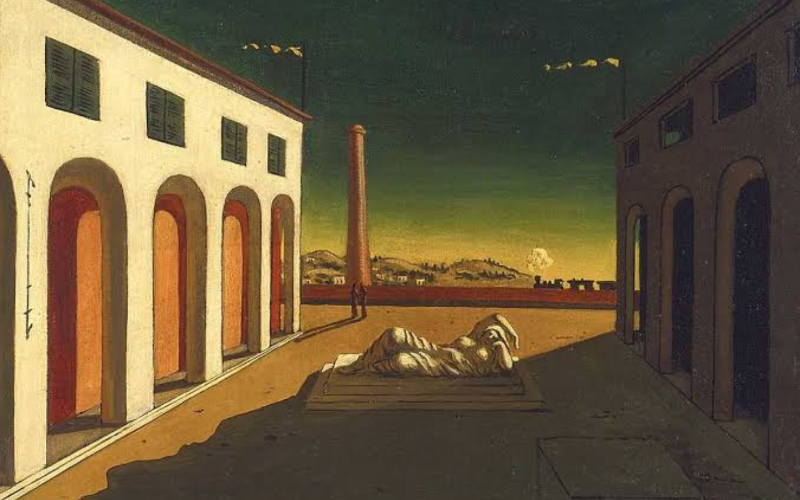Paintings by the Italian artists Giorgio de Chirico and Carlo Carrà primarily produced between 1911 and 1920 are considered examples of metaphysical art.
De Chirico, who is credited with starting the movement, painted “that which cannot be seen” in his dreamlike works with stark contrasts of light and shadow. In 1917, the school and its guiding principles were formally established by De Chirico, his younger brother Alberto Savinio, and Carrà.

While other modern movements acknowledged nostalgia for Italy’s now faded Classical grandeur as a major influence on their art, Futurism steadfastly rejected the past. In Milan, Giorgio De Chirico first created the style that would later become known as Metaphysical Painting.
However, he later developed his focus on strange, unsettling spaces—based on the Italian piazza—in the more subdued surroundings of Florence.
A sense of dislocation between the past and present, as well as between the individual subject and the space they are in, is present in many of De Chirico’s works from his Florence period. These pieces quickly caught the eye of other artists, including Carlo Carrà and Giorgio Morandi.
For instance, he depicted a similar square in Turin Melancholy (1915), using unnaturally sharp contrasts of light and shadow that give the scene a sense of poignant but vaguely threatening mystery.
The deep perspectival space, dark-toned sky, and arcades in this painting are all pictorial elements common to De Chirico’s surreal, evocative works. He gave his works cryptic titles that add to their enigmatic quality, such as The Nostalgia of the Infinite (1913–14), The Philosopher’s Conquest (1914), and The Soothsayer’s Recompense (1913). Filippo de Pisis and Mario Sironi were two additional metaphysical painters.
Carrà and De Chirico spent some time in Ferrara in 1917, during the height of World War I, where they continued to refine the Metaphysical Painting aesthetic that would later catch the eye of the French Surrealists.
The dispute between De Chirico and Carrà over who founded the group led to the short lifespan of the Metaphysical school, which ended around 1920.











